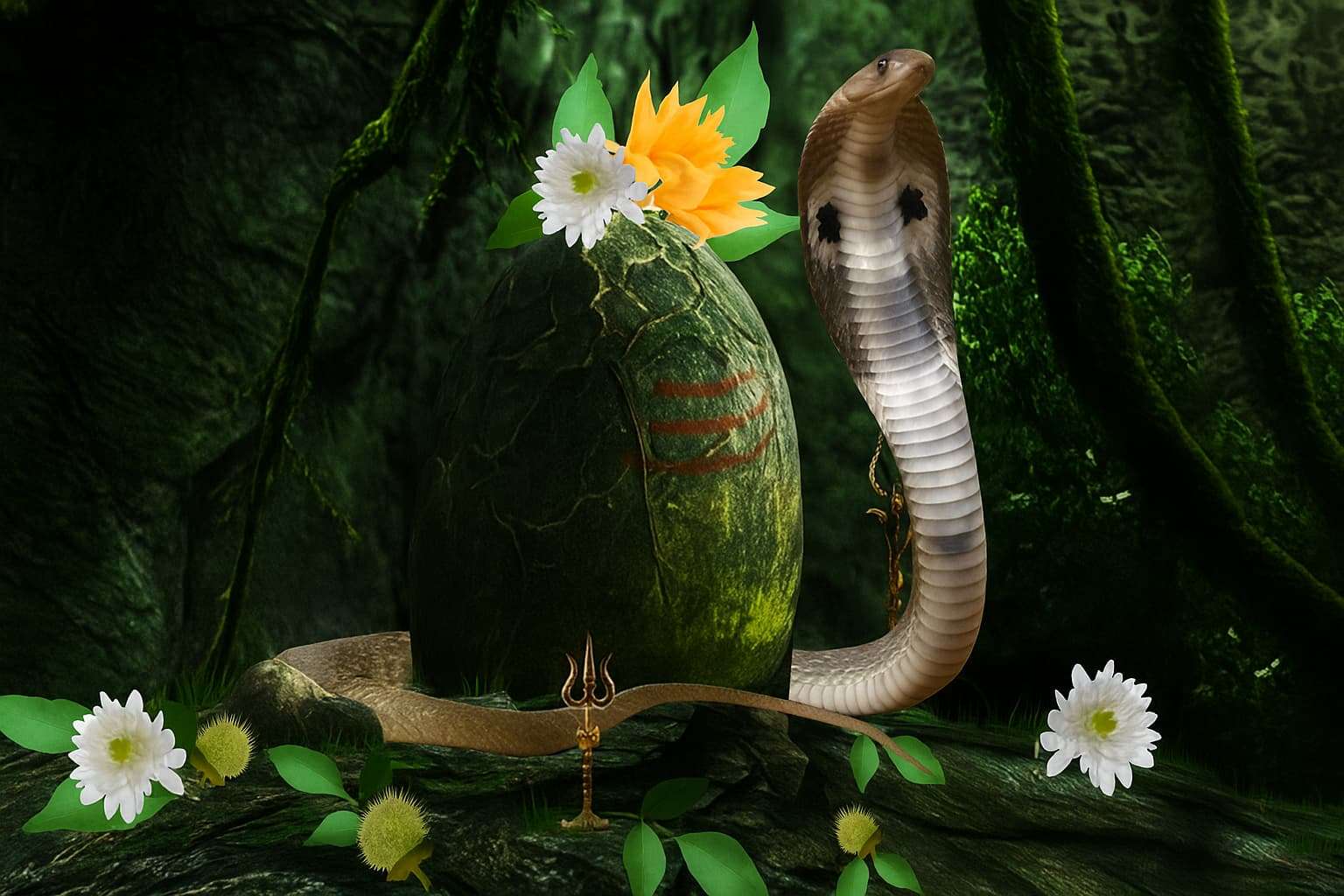
The Nagamani, or snake pearl, is one of the most mysterious and captivating elements of Indian mythology and folklore. Said to be a glowing, rare gem found in the heads of venomous snakes—especially cobras—this mythical stone has long enchanted storytellers, spiritual seekers, and curious minds. But the question remains: Is it real, or is it just another well-woven legend?
What is a Nagamani?
Mythology speaks of a glowing jewel, thought to be hidden inside the heads of snakes, particularly cobras. Said to offer protection, healing, and luck, it is central to Indian folklore and religious beliefs. However, modern science does not support its existence.
In Sanskrit, “Naga” means snake and “Mani” means jewel. Ancient lore describes the Nagamani as a radiant, glowing gem with mystical powers—often formed when a sacred raindrop from the Swati Nakshatra enters a cobra’s mouth. Some say it glows in the dark, shining pale green or blue in moonlight.
Powers and Symbolism of the Stone
The Nagamani is not just rare—it’s divine. According to South Asian mythology:
- It provides spiritual protection
- Heals illnesses and wards off evil
- Brings immense good fortune to its possessor
Its symbolic value is deeply embedded in Indian culture and is honored during festivals like Naga Panchami, where devotees worship serpent deities seeking their blessings.
The Scientific Truth: Does Nagamani Really Exist?
From the lens of modern science, the existence of such a gem is clearly unfounded. Biologically, snakes cannot form gems. Unlike mollusks that create pearls, snakes do not have the anatomy for such formations. Investigations have shown that so-called Nagamani stones are:
- Gallstones
- Crystallized venom or mineral concretions
- Artificial glowing objects
They may glow under certain lighting conditions due to protein reactions, but they lack any magical or healing properties.

Fake Nagamani and Scams
The myth of Nagamani has unfortunately become a tool for fraud. Scam artists often:
- Attach fake gems made of glass or plastic to snakes
- Sell them online or in black markets
- Claim supernatural powers and charge lakhs of rupees
News reports, including those by News18, warn against such cons, urging the public not to fall prey to fake spiritual claims.
The Cultural Legacy of Nagamani
Despite no scientific evidence, the Nagamani remains a beloved symbol in:
- Hindu mythology
- Indian cinema and television
- Fantasy literature
It appears in stories of saints, snake charmers, temple legends, and spiritual lore. Its mythical glow continues to enchant generations and serve as a metaphor for divine gifts and inner power.
Final Thoughts: Is the Nagamani Real?
Scientifically? No.
Culturally and mythologically? Absolutely.
It symbolizes India’s mystical storytelling traditions, combining natural beauty, spiritual reverence, and age-old wonder. Even if scientific research disproves its reality, the Nagamani still captivates people across cultures and generations.
No, the Nagamani is not scientifically proven to exist. Modern biology confirms that snakes, including cobras, do not have the biological ability to form gemstones. Objects often mistaken for Nagamani are usually gallstones, mineral deposits, or artificially created fakes.
According to folklore, the Nagamani is said to offer protection from evil, provide healing energy, attract good fortune, and enhance spiritual growth. These claims, however, are rooted in mythology and have no scientific basis.
Scammers exploit the Nagamani myth by selling glass or plastic stones, often inserted into dead snakes’ heads, claiming they are real and magical. People are lured by promises of wealth or healing and often end up losing large sums of money.
The Nagamani holds a symbolic place in Indian mythology and Hindu traditions. Its significance is particularly evident in rituals and celebrations centered around snakes, including the Naga Panchami festival. The gem is considered divine and is often featured in religious stories, TV shows, and spiritual folklore.
Some fake Nagamani stones are designed to glow in the dark using phosphorescent materials or chemicals. While legends claim the real Nagamani emits light naturally, science has found no evidence of any naturally occurring gem inside a snake that glows on its own.

